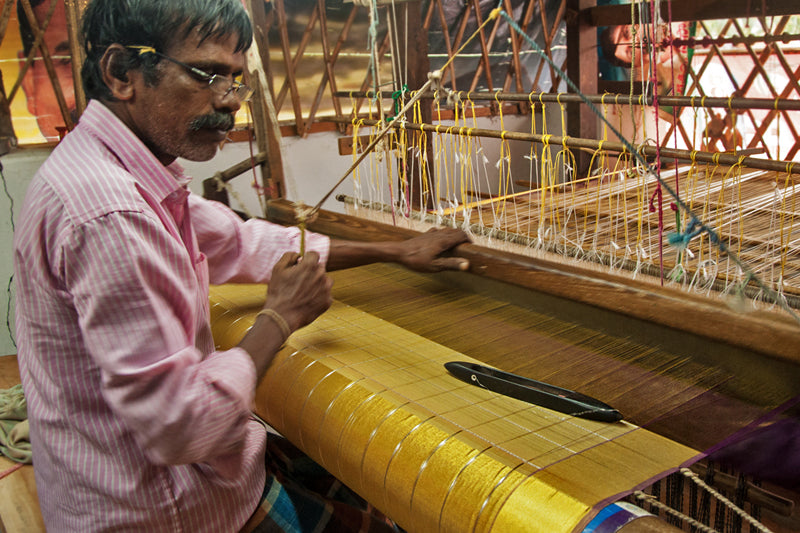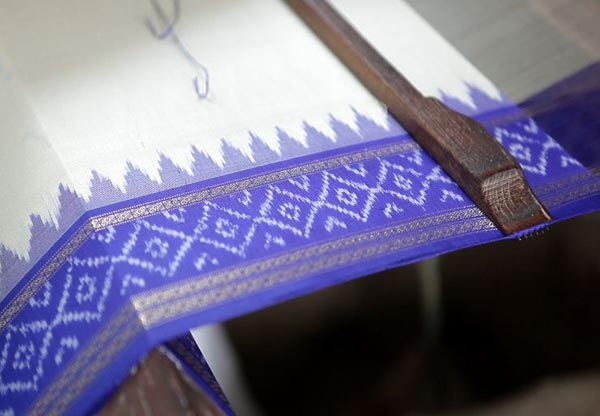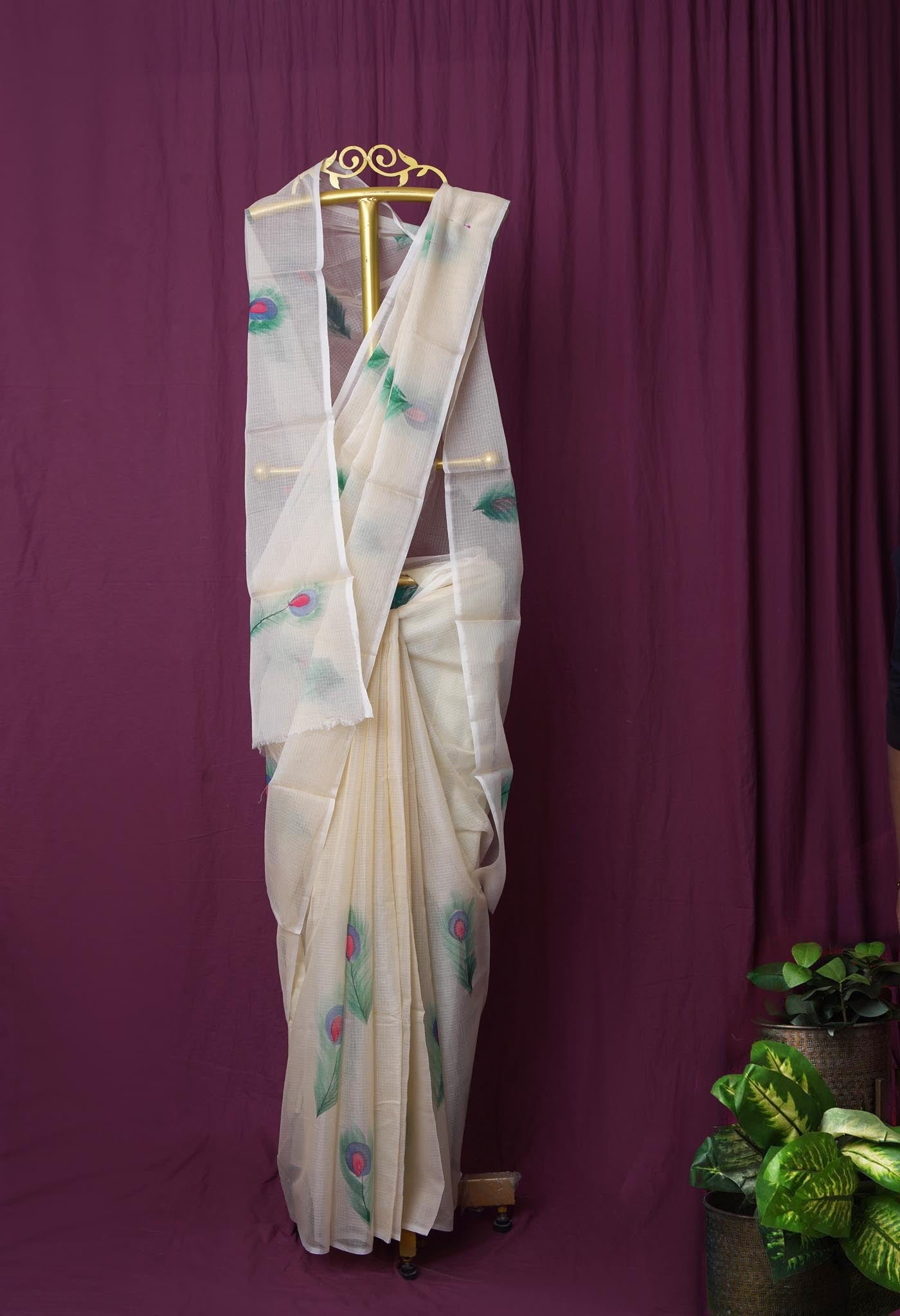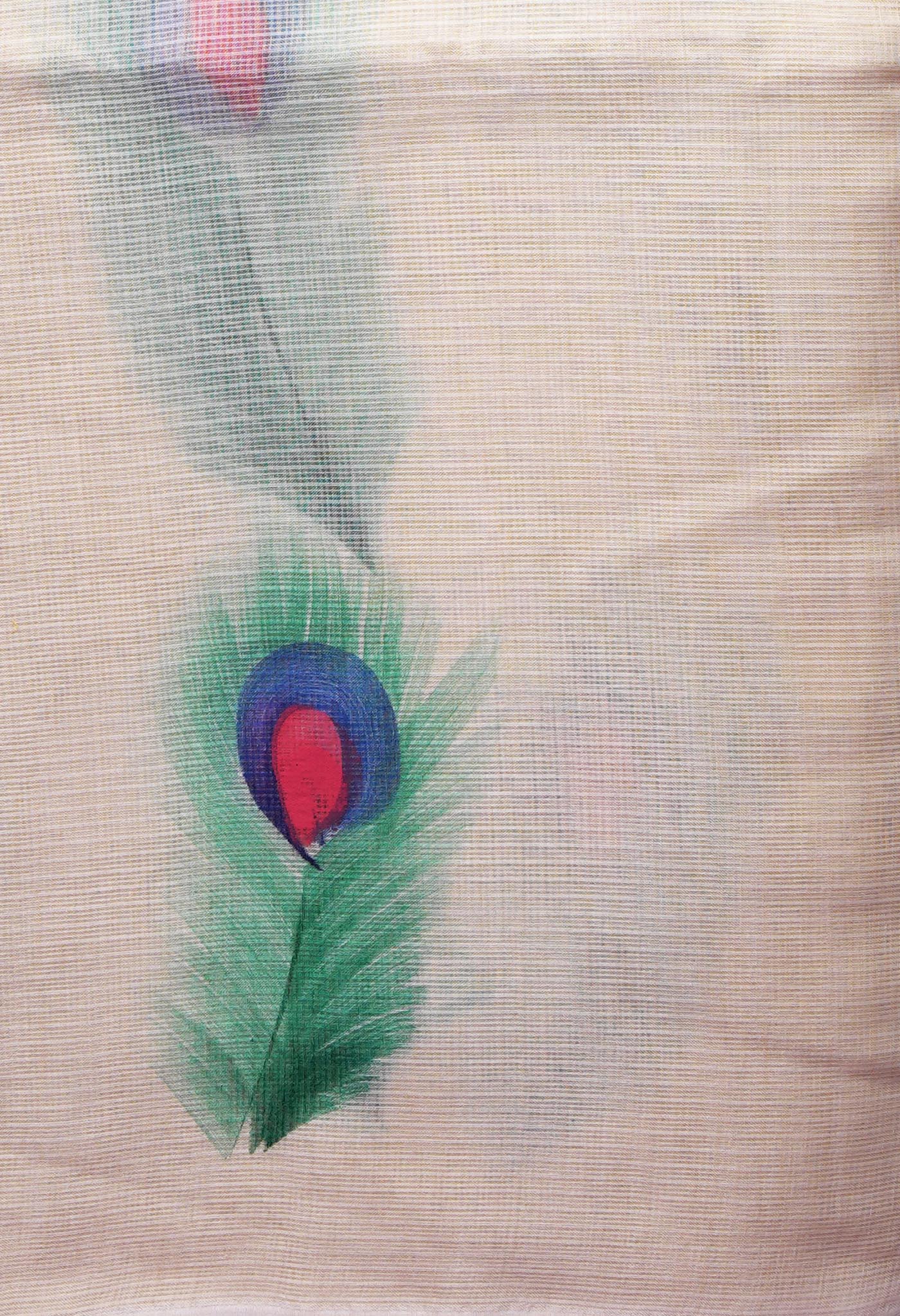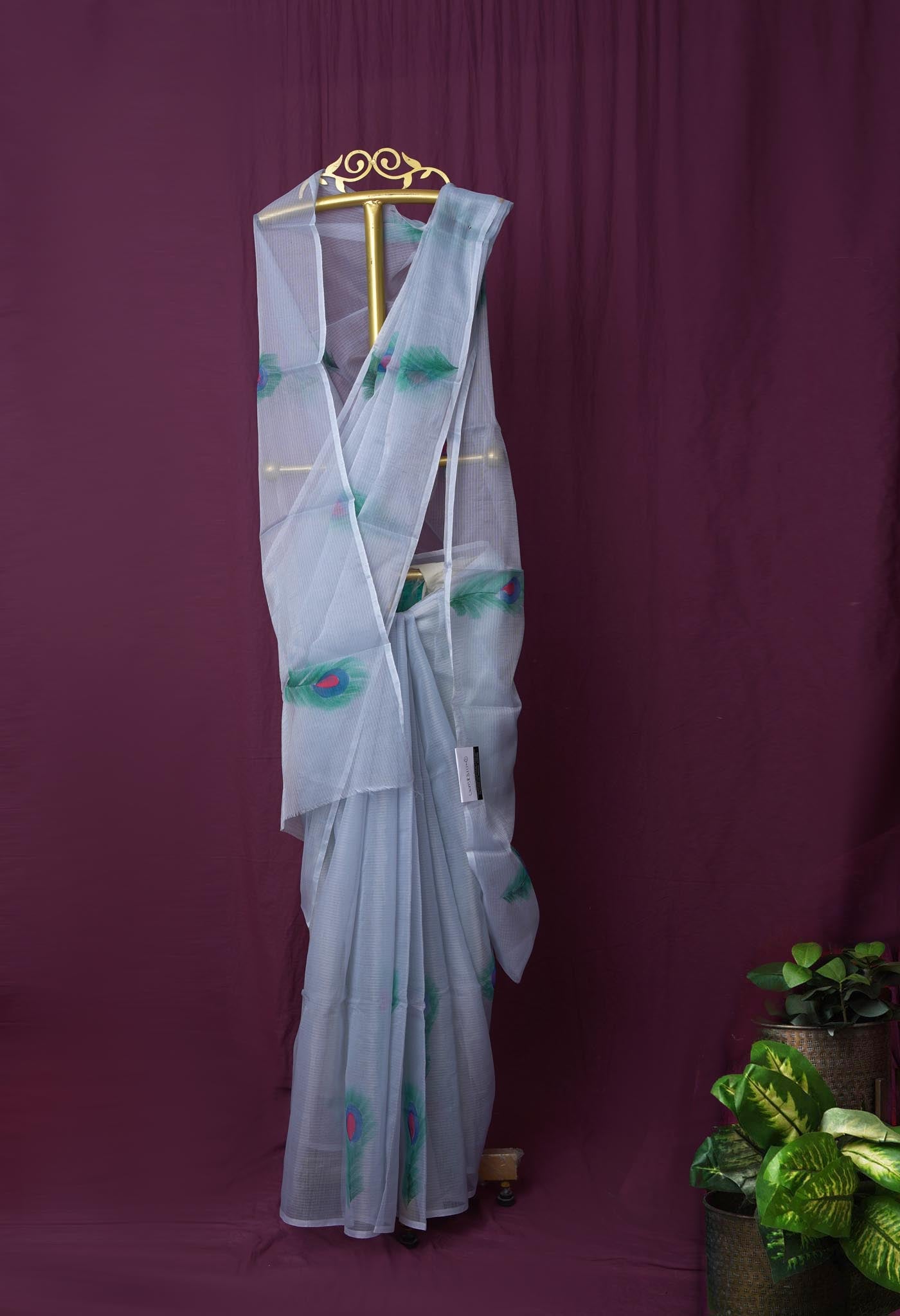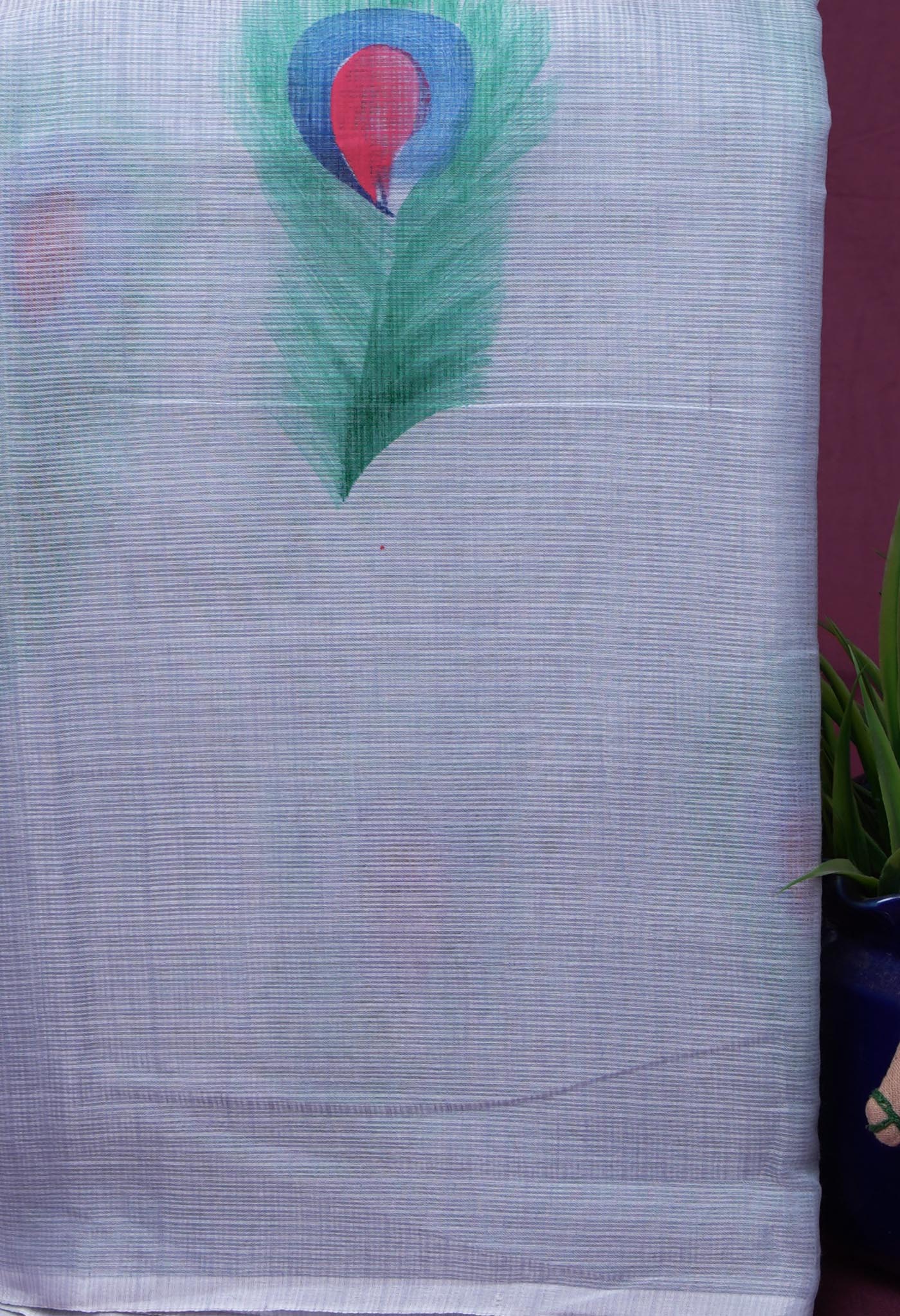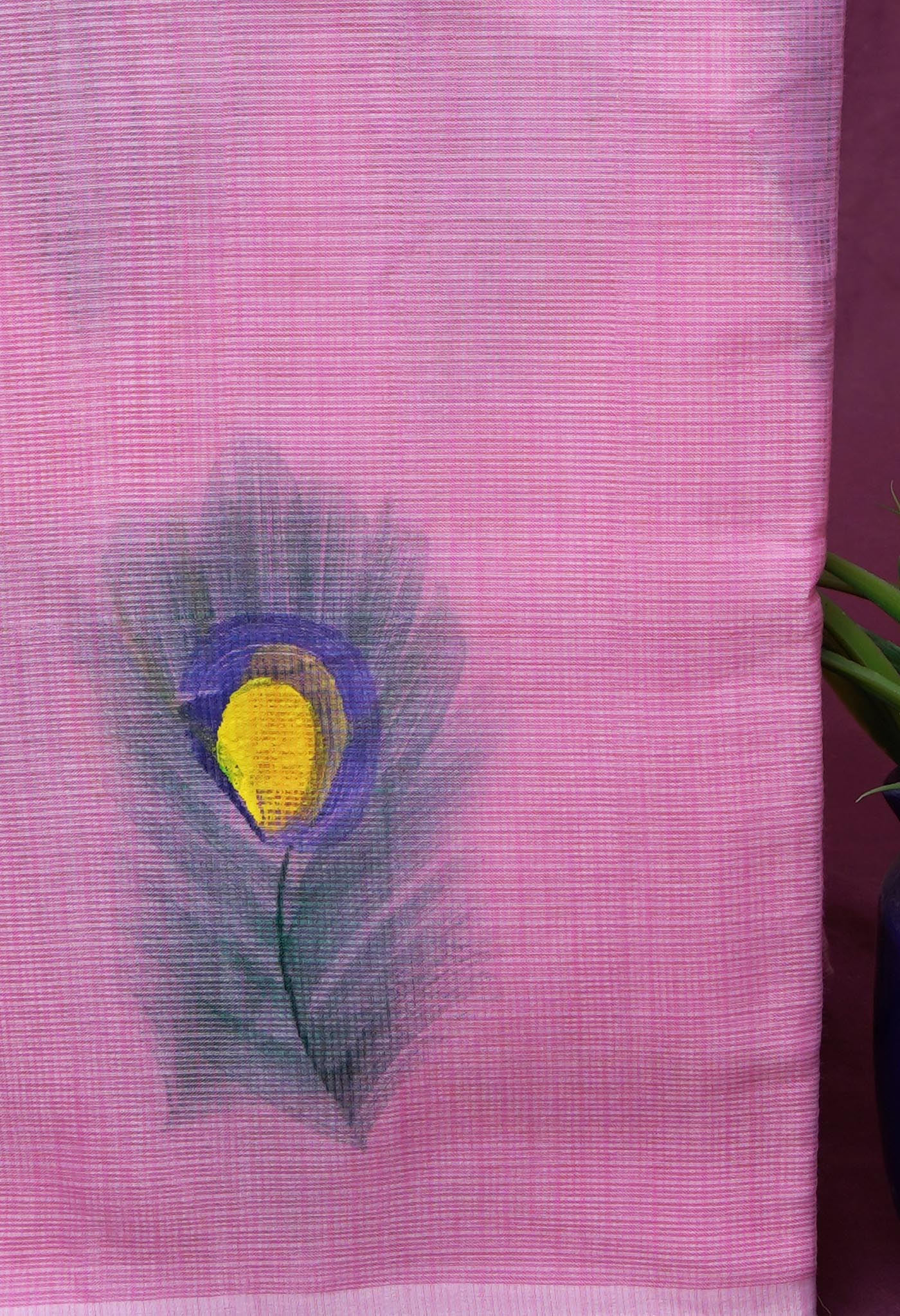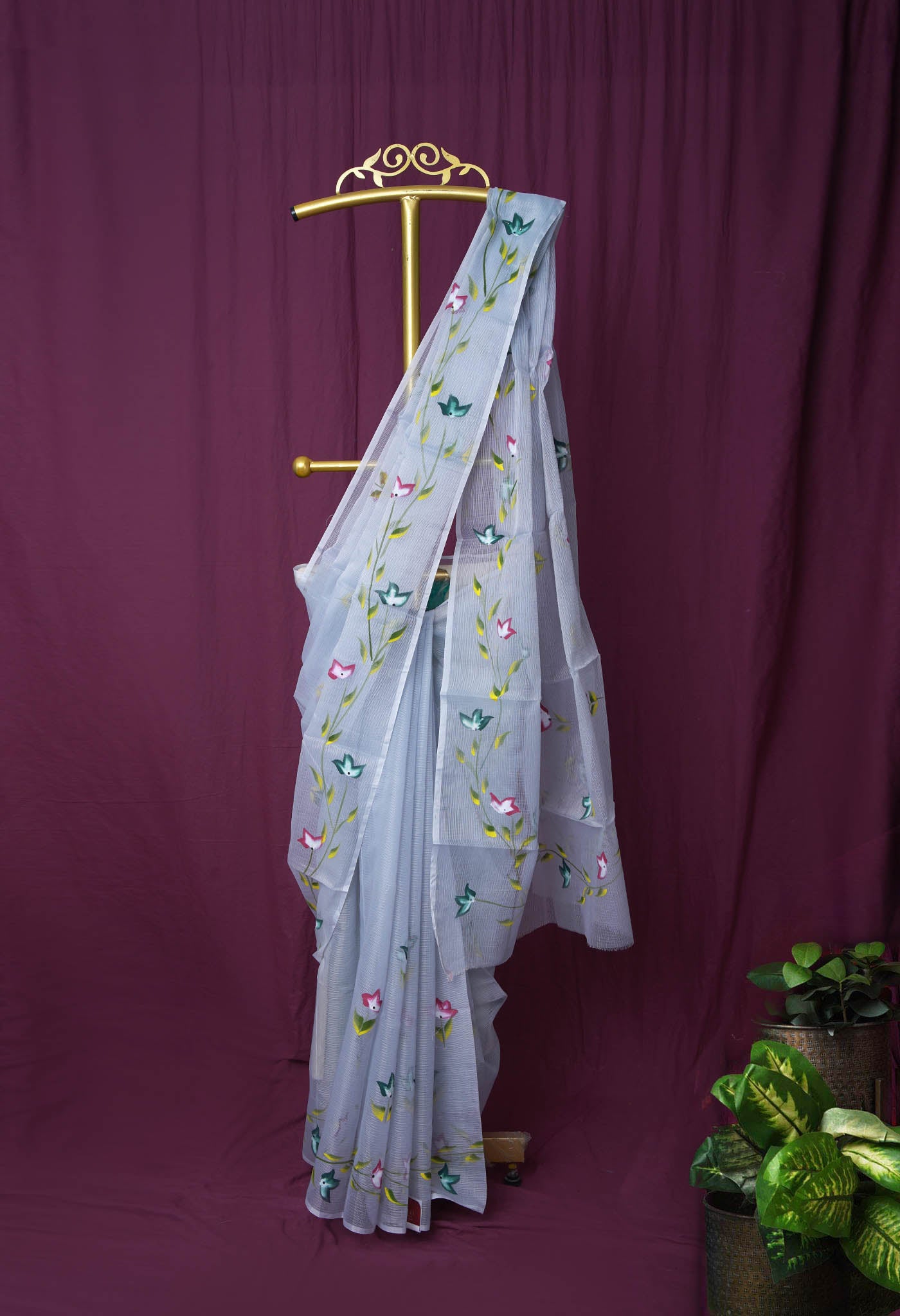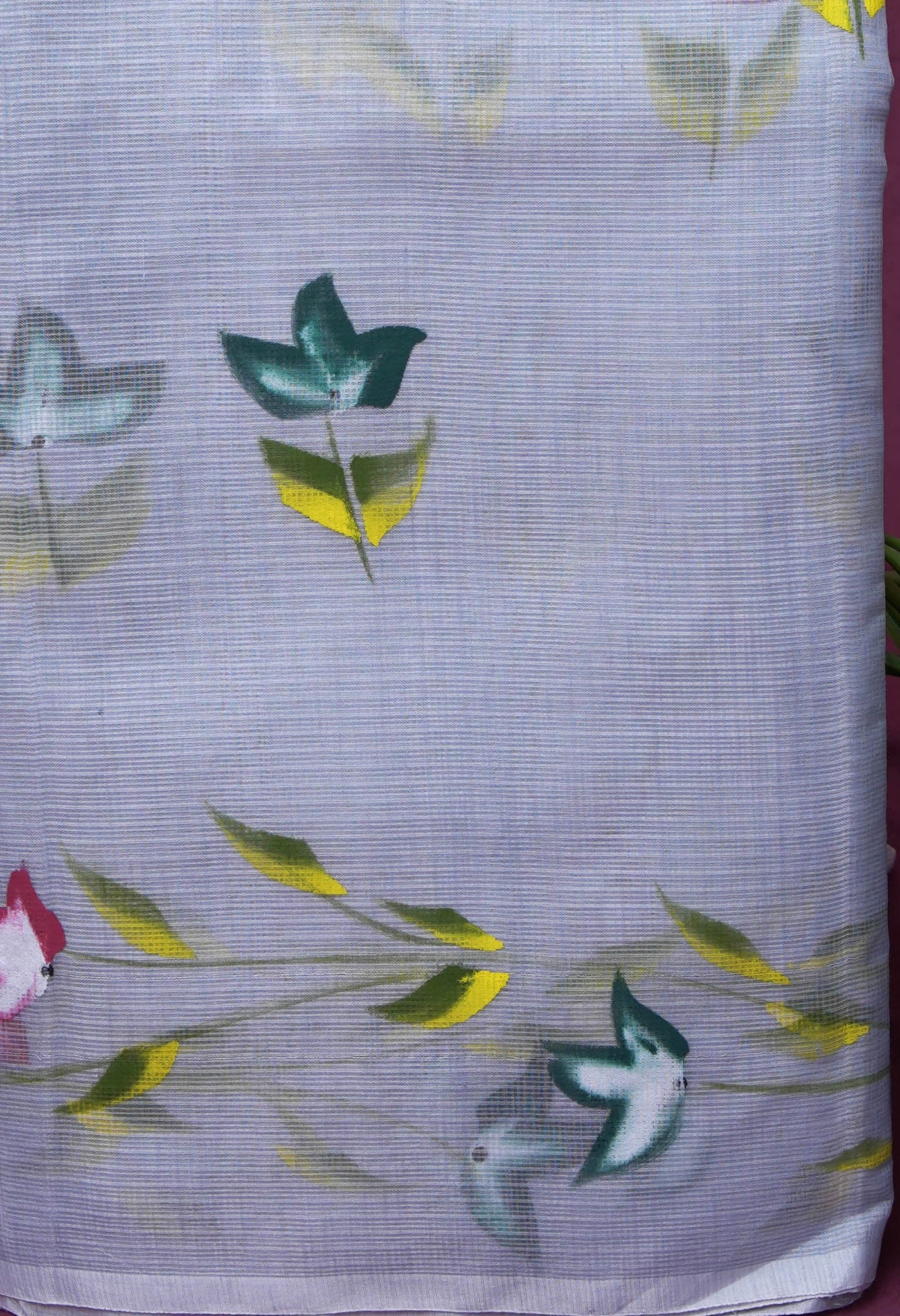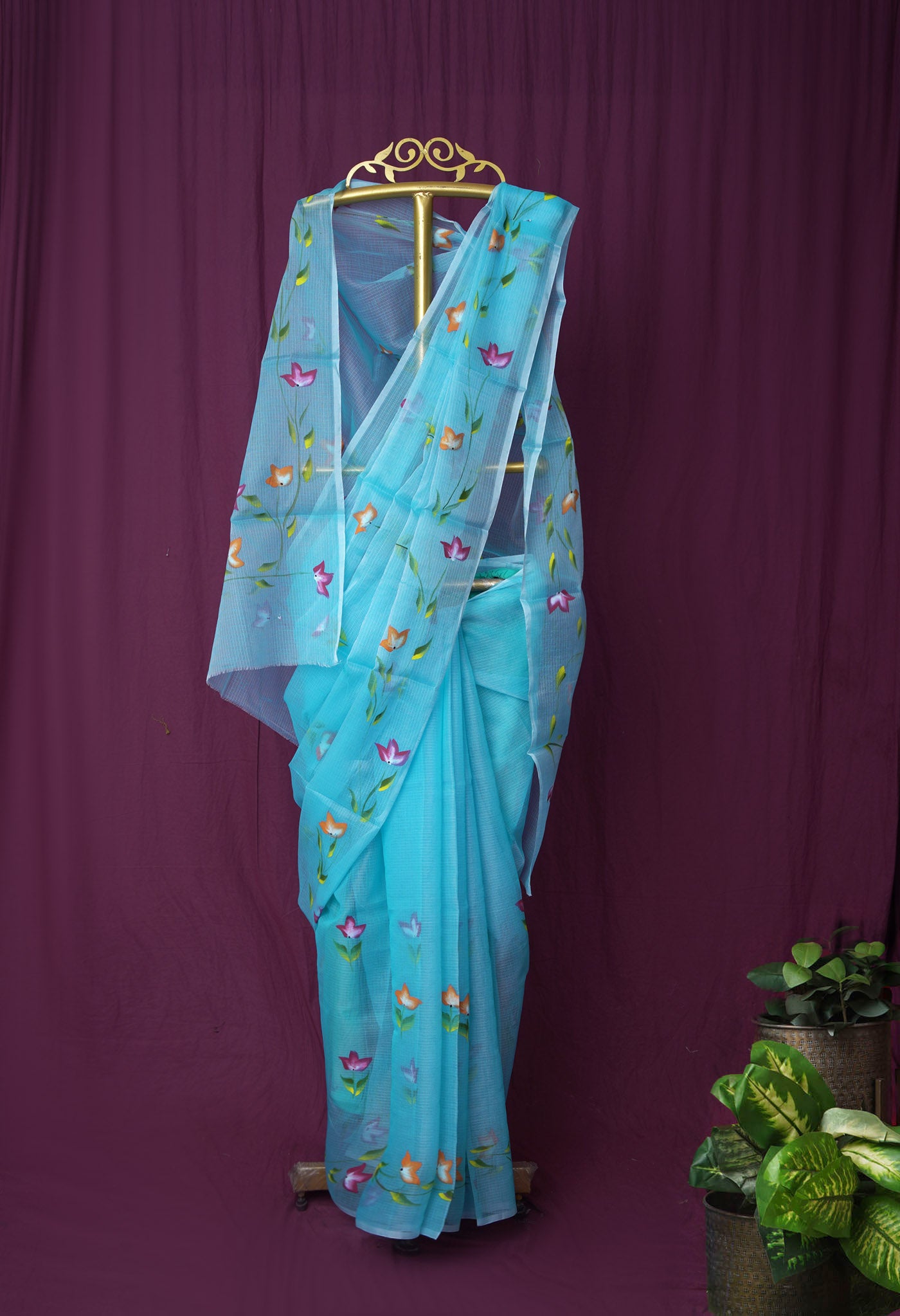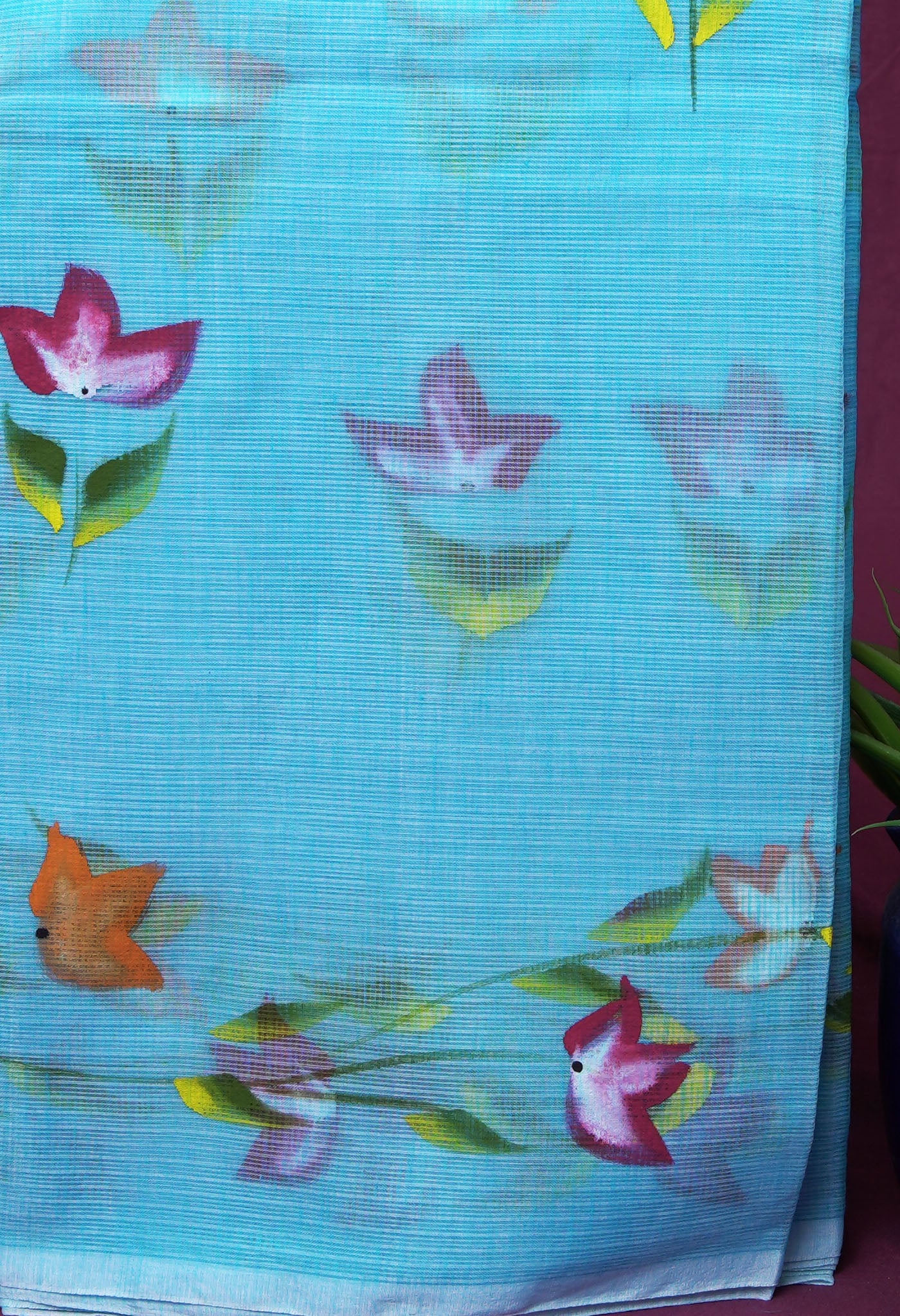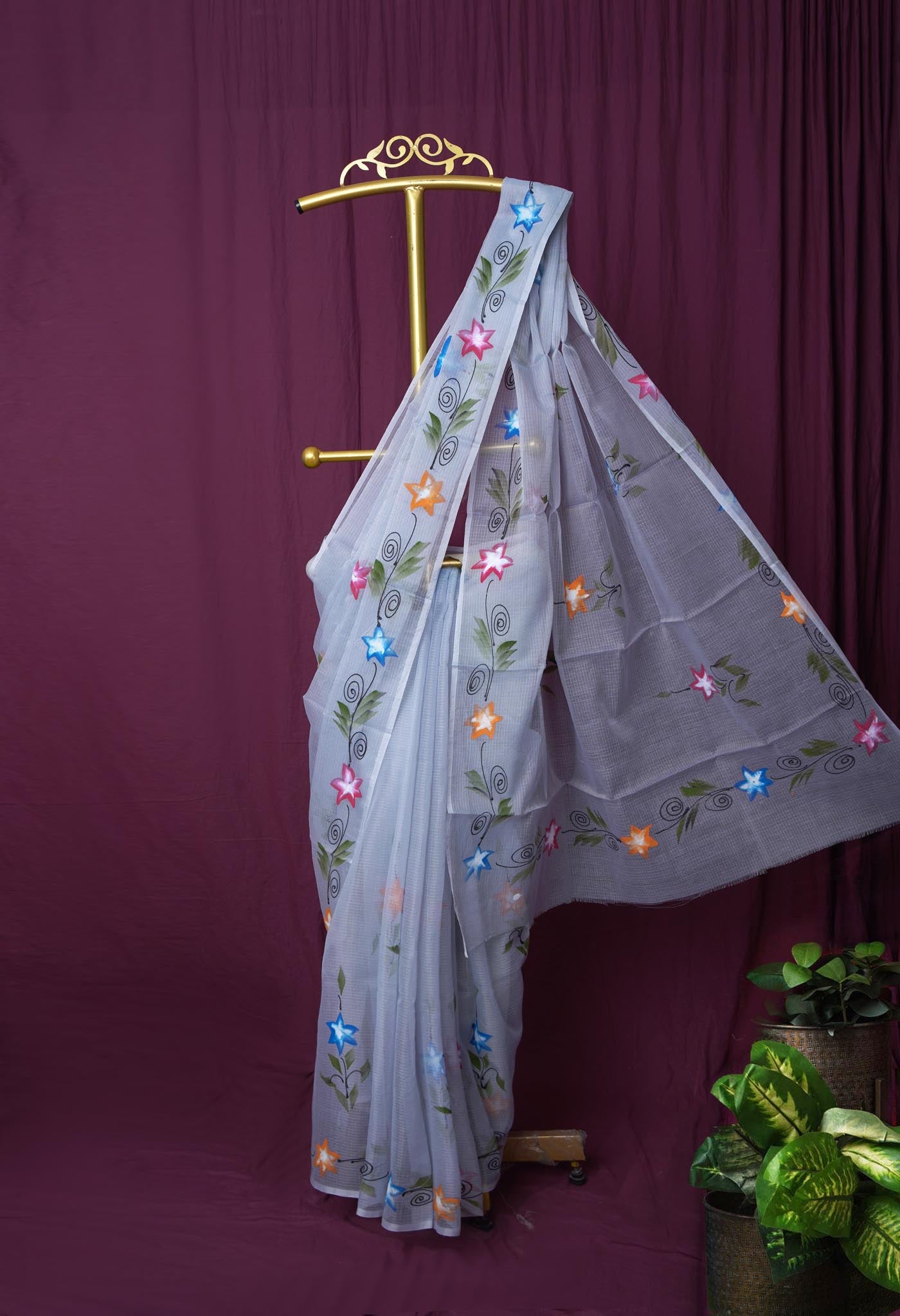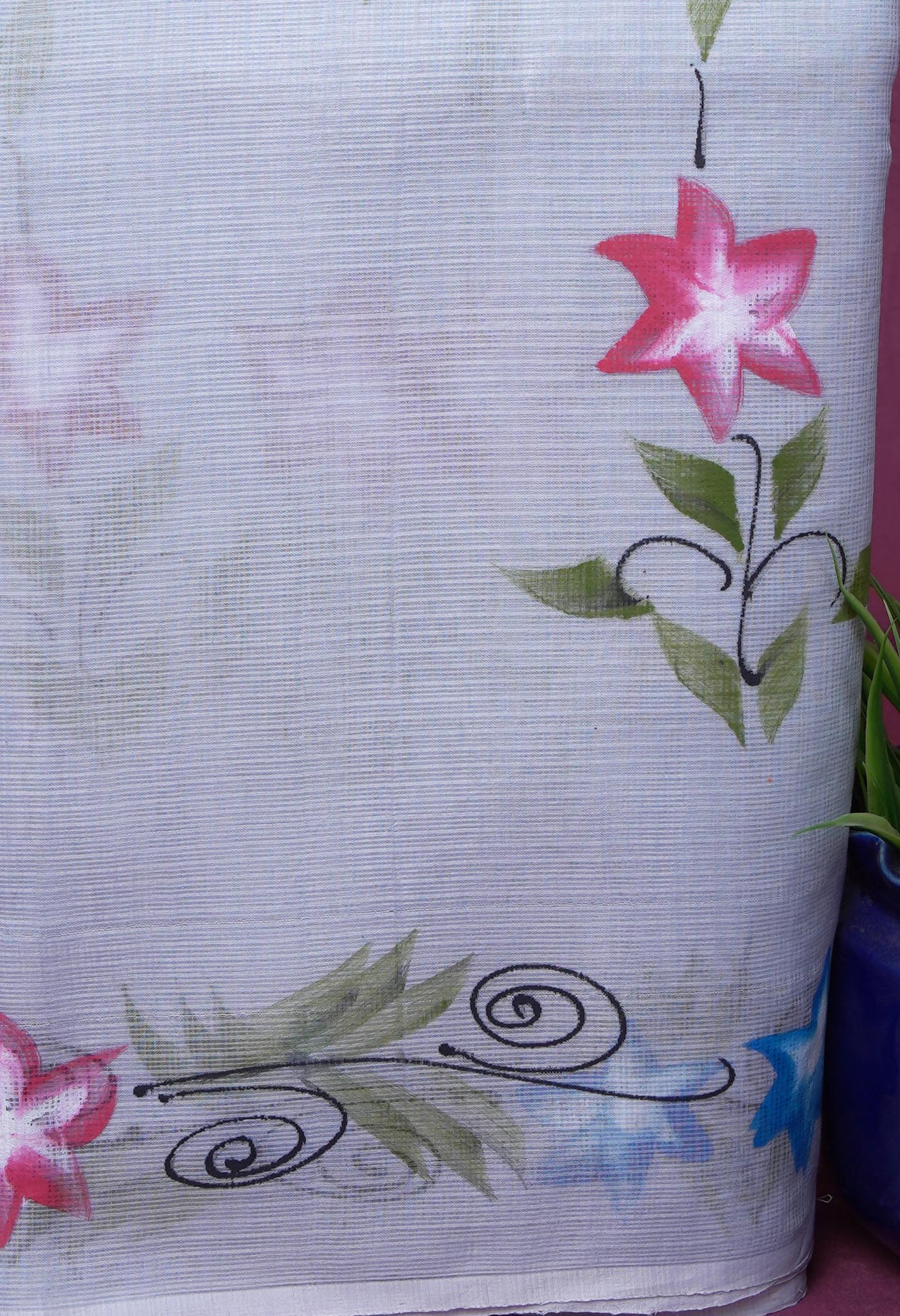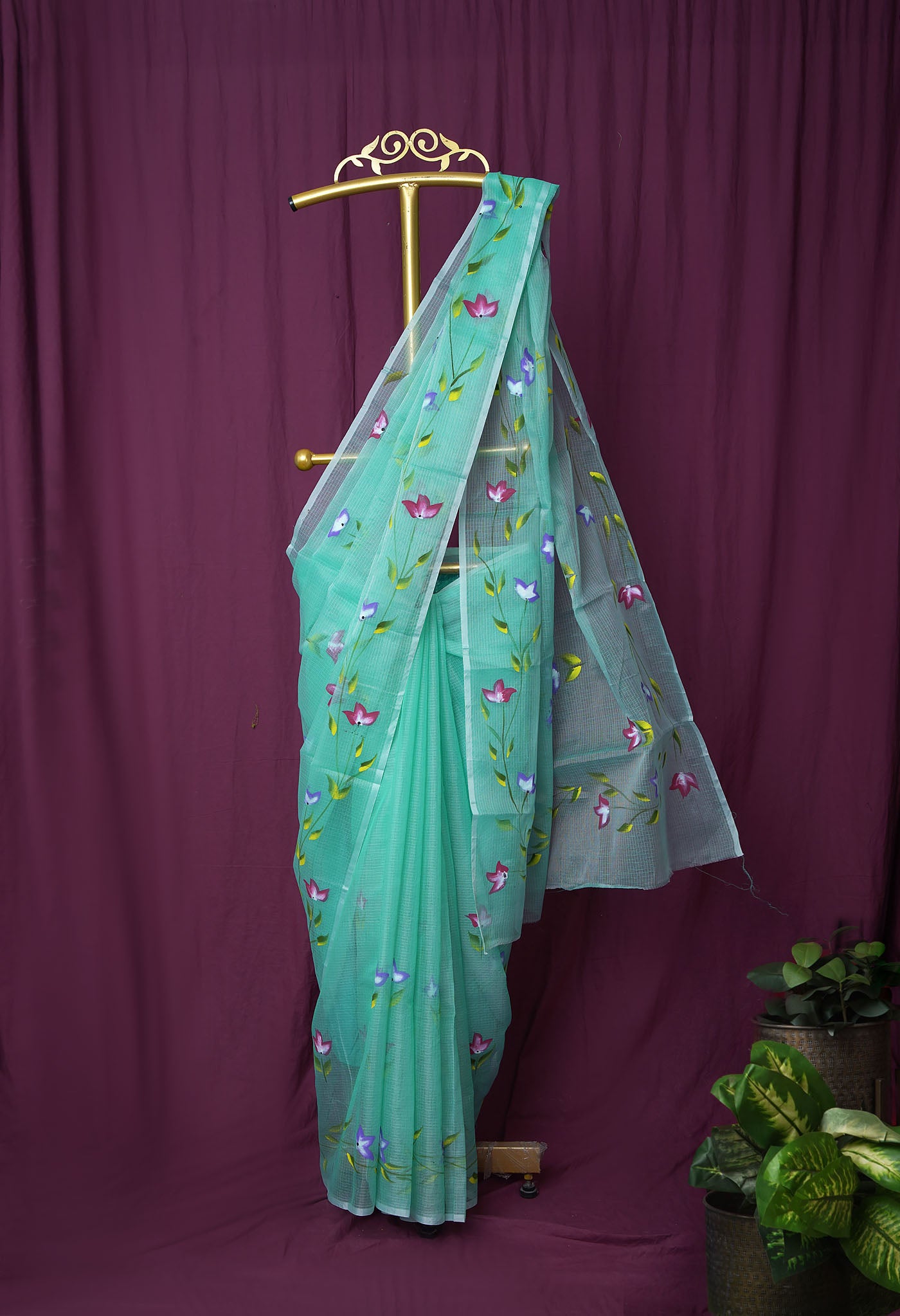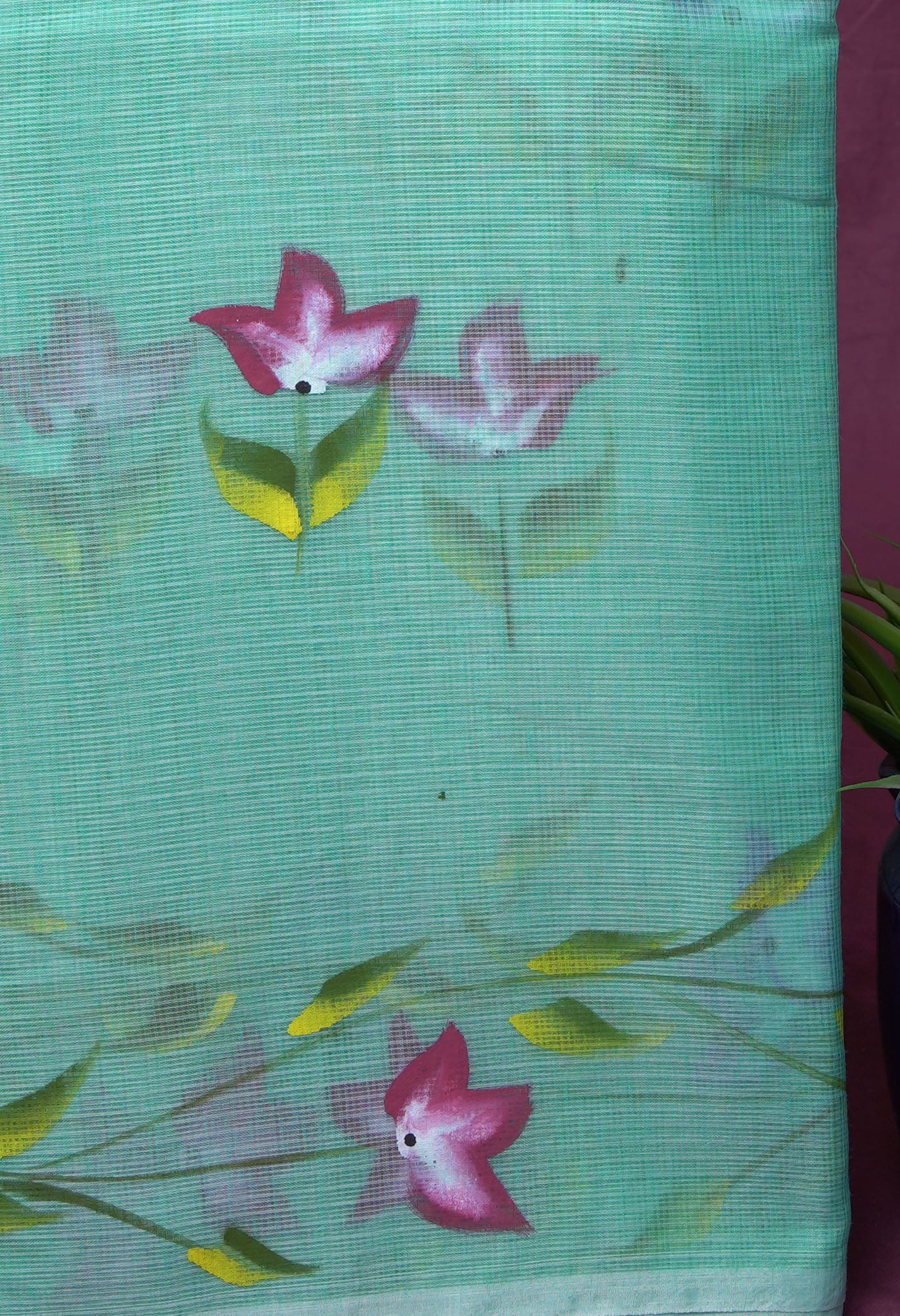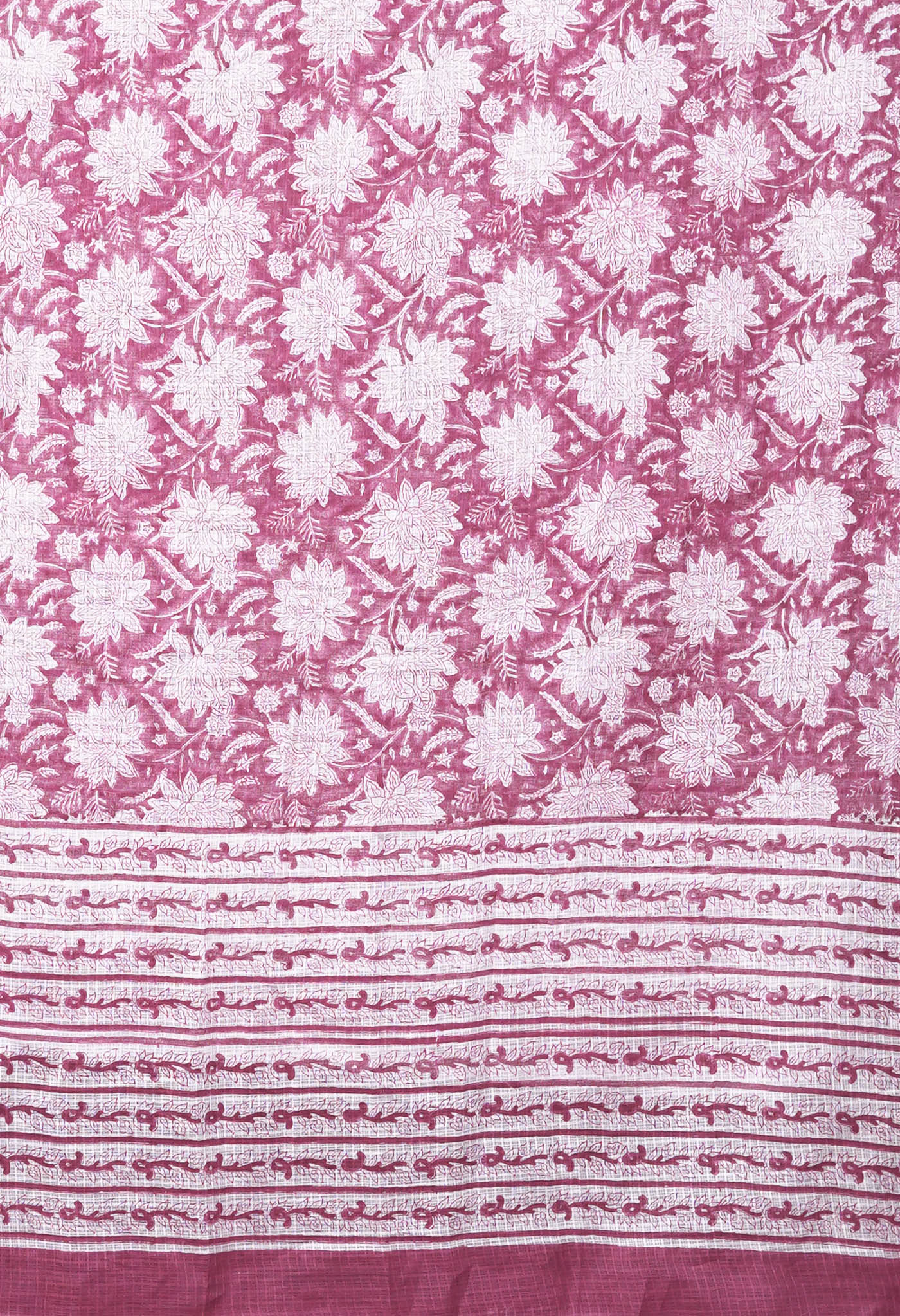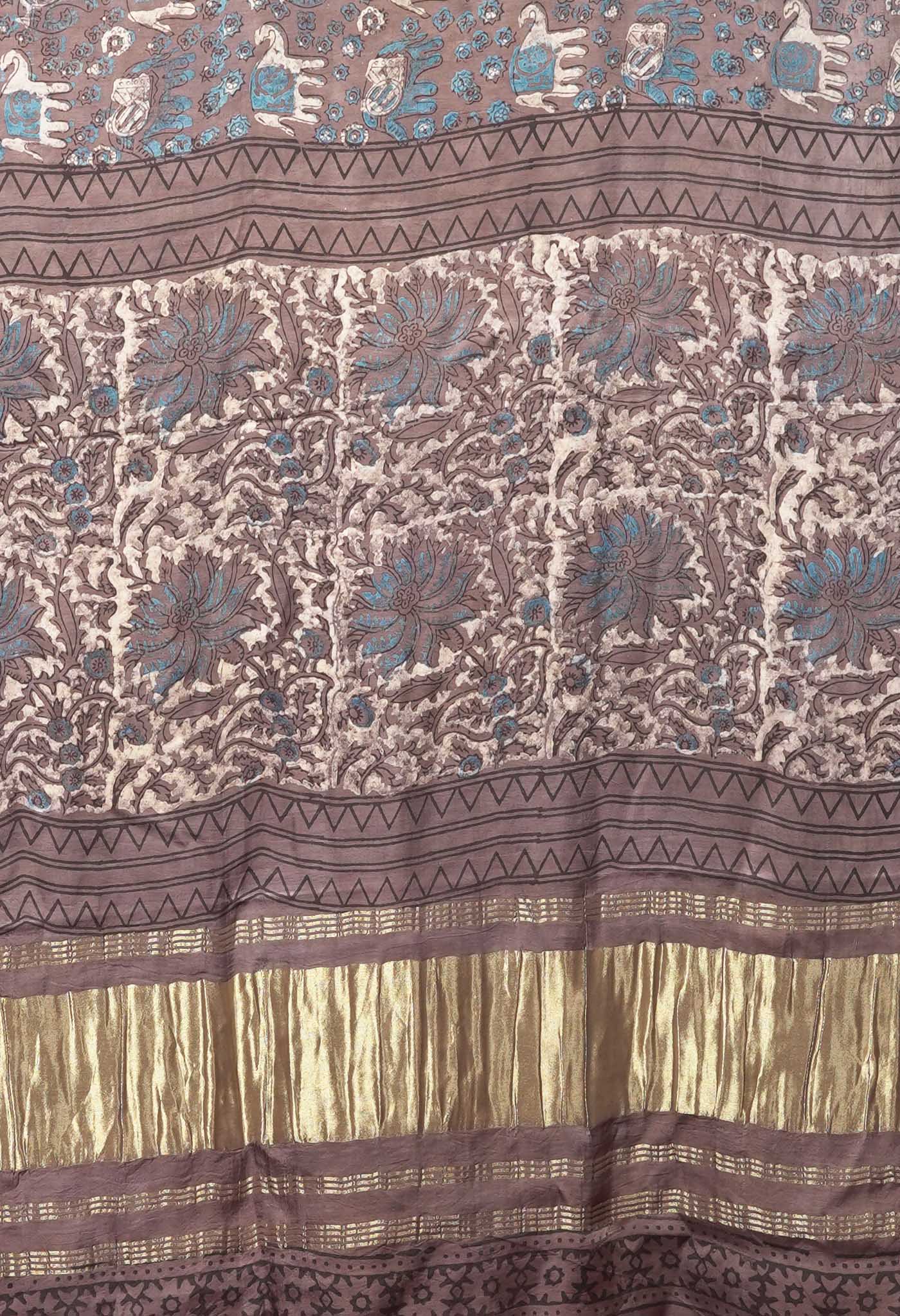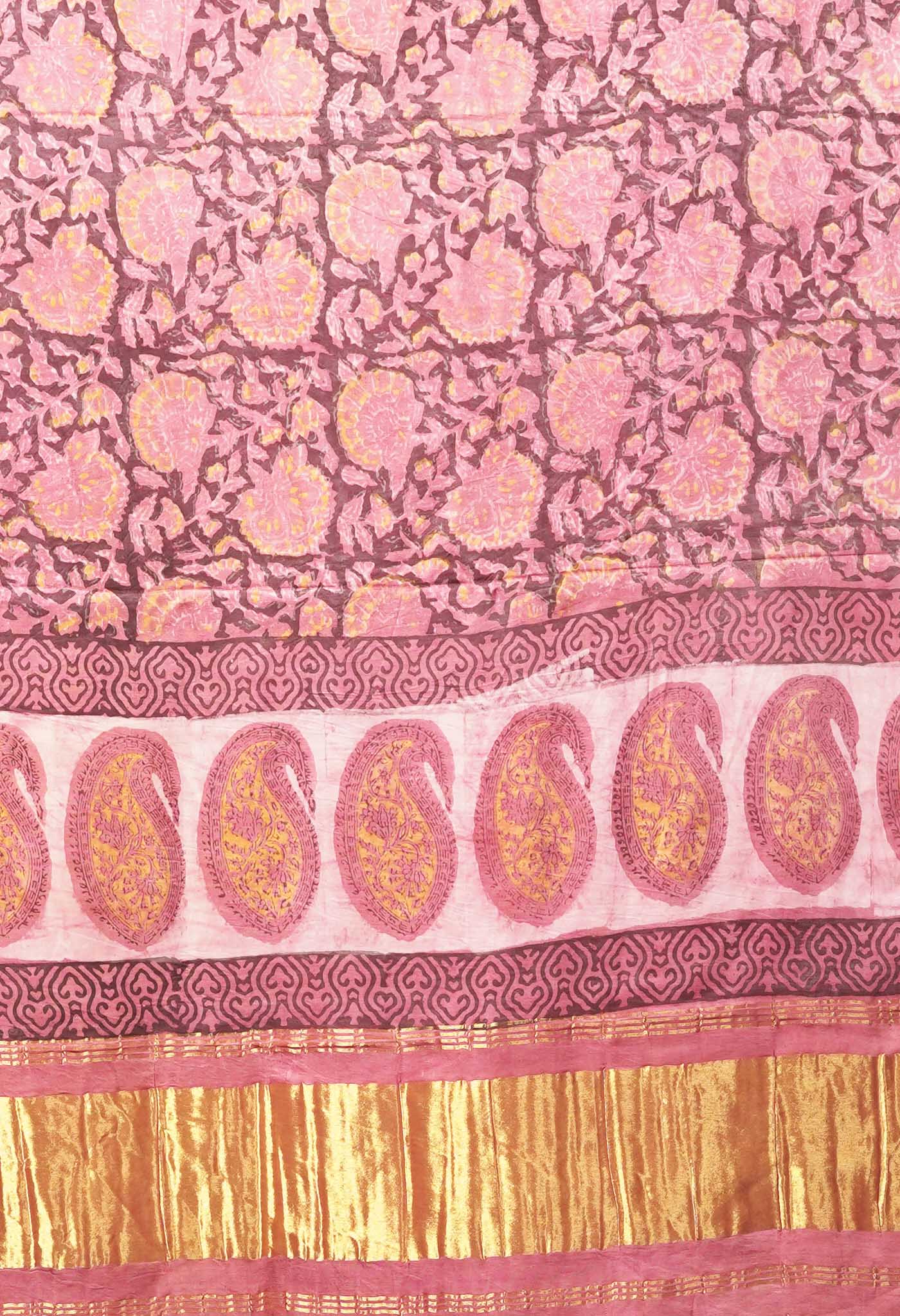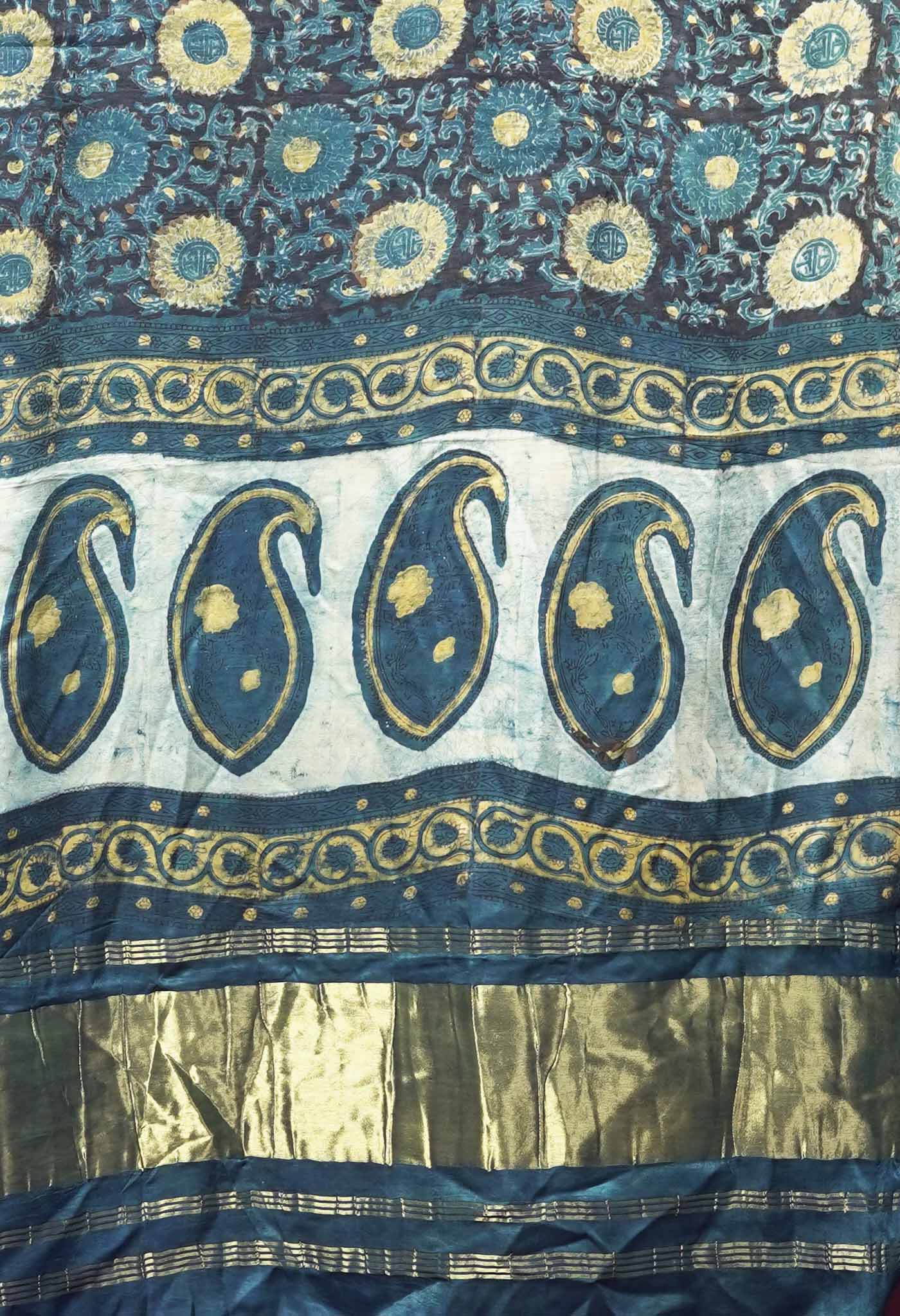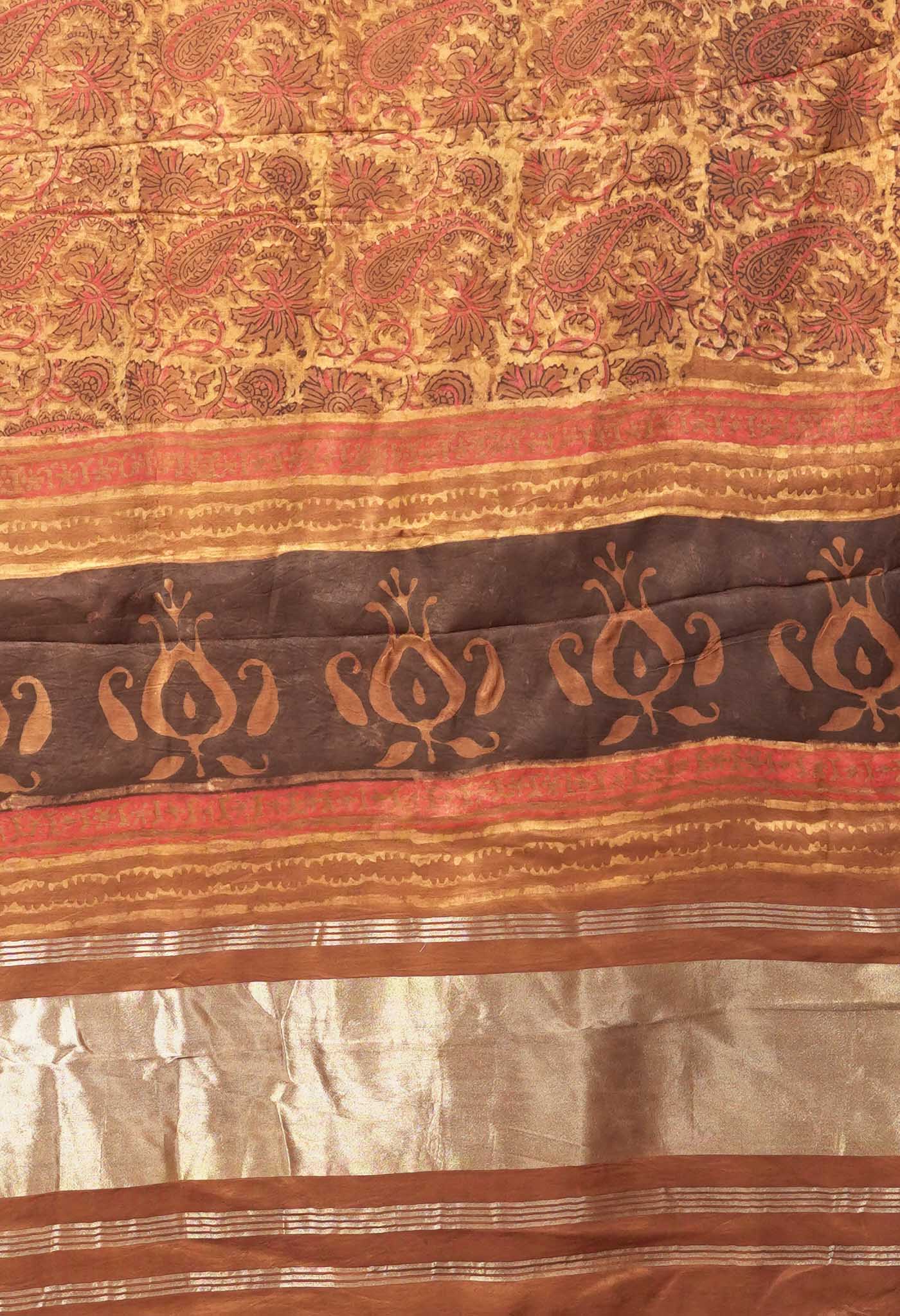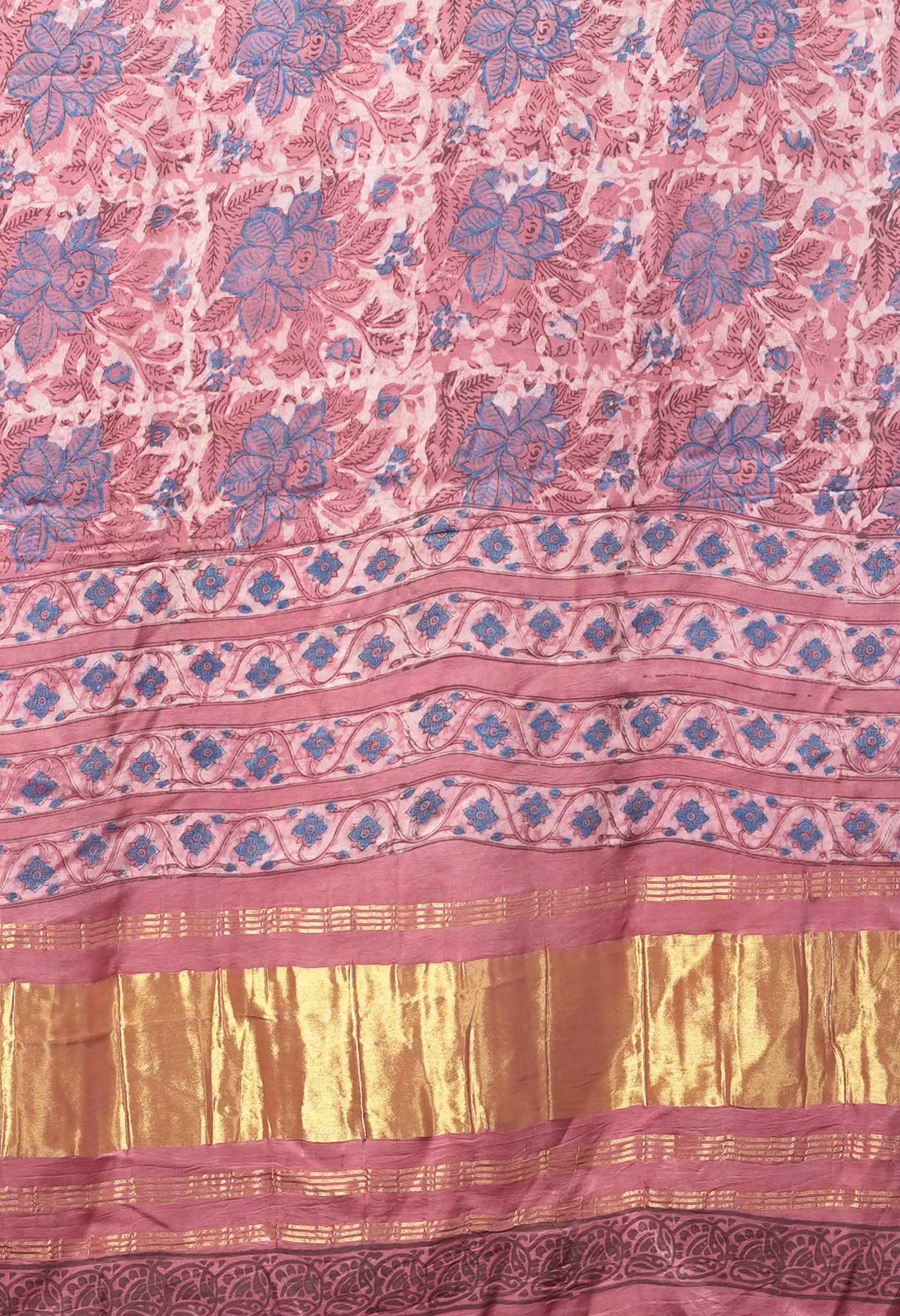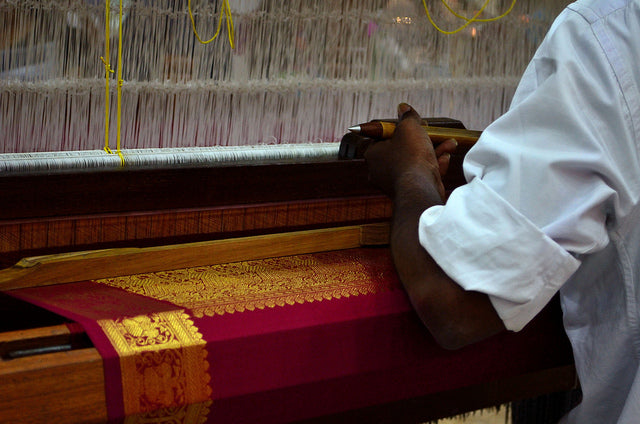
This is How Our Beloved Bapu – Mahatma Gandhi envisioned Indian Handlooms
Handlooms are nothing new to India. An age old tradition of making cloth by spinning and weaving since historical times, handloom has been the backbone of a vast number of the rural populace for their livelihood, till date.
Gandhiji favoured handlooms, and expounded his views way back in 1919 when things seemed bleak for the handloom industry. Gandhiji saw two things of great importance in handloom - the fabric of the nation; the heritage of a great country like India. He envisaged tremendous variety and scope in the craft of weaving and associated craftsmanship. He also foresaw its excellent employment potential and a means to mitigate the existing rural poverty.

Handlooms a century ago – a historical take of relevance
Surprisingly the Father of the Nation Mahatma Gandhi had a very firm opinion on handlooms and held a very passionate view about their role in the nation’s economy. In many of his observations and stated beliefs he repeatedly emphasized the condition of handlooms that too way back in 1919. Struck by the immense flooding of cloth from overseas during the existing Bristish Rule then, it threatened the very roots of the already-in-doldrums handloom industry.
In one of his letters Gandhiji mentions, “The handloom weaving is in a dying condition. Everyone admits that whatever may be the future of the mill industry, the handlooms ought not to be allowed to perish”. One of the main causes attributed by a research scholar of the time, were the causes of the growing poverty observed by him in particular villages that signaled the destruction of handlooms which complemented agricultural occupation.

Mr.D.G.Ladha, owner, founder and current CEO of Unnati Silk Prints Pvt.Ltd., said of the Father of the Nation’s view regarding handlooms, which also partly inspired him to be associated with handloom sarees since 1980. Gandhiji felt for the rural population of India which made him voice his innermost feelings regarding their helplessness. “People do not understand the true worth of handloom. Not only is it a heirloom product but defines the pulse of India that not only sees unity in its vast diversity but also empowers a vast section of society that constitutes a rural population which have agriculture and handloom weaving as their livelihood and which provide a mainstay to India’s economy”.
Gandhiji’s take of the existing situation
Gandhiji, believed that there existed three things that needed urgent attention when it came to the propagation and spread of handloom weaving across the country which he felt could prevent the gloom and despair that pervaded the atmosphere then, and that had been causing many a worthy soul to leave the trade.
a) A loom that was operated by hand but simple in construction for the layman and the basic know- how to operate with ease; one that could be built with simple materials, would be sustainable and cost effective. The existing one at that time cost seven pounds and had a lot of string and wood work that made it slightly out of reach for many.

b) Furthermore if the craft was to be nationally spread for the rural masses to benefit, it needed an education that would make it easy for grasping, to one and all, in a language that was easily understood and would be the uniting factor for a country that had so many languages and dialects that made it extremely difficult for quick communication and common understanding. English was the language of the classes, the constantly changing regional lingo that of the masses, making the exchange between the two cumbersome and depriving the craftsmen of many a useful thing which they could have otherwise learnt.
c) A common thread by way of tongue was needed that could help in obviating the difficulties of social intercourse that would strengthen the patriotic fervor and promote harmonious exchanges across the nation. Hindi became that tool that seemed to be the likeliest of the languages that had a commonality across the strata of Indian society at that time and found popularity in its use.
Gandhiji – a far-sighted visionary
- Gandhiji had a clear vision on the root cause of the malaise in the handloom industry. The existing means for producing cloth was in the hands of the urban few that was ill-affordable for the vast weaving community across the nation, but based in its rural habitats.
- Secondly the weavers were concentrated in different pockets, spread across the land and there was no common factor that could get them to communicate easily and exchange knowledge of their craft that could bind the entire community as a whole. He saw that Hindi was restricted to the Northern portion as a whole and certain parts in the Eastern and western parts of the country.

- The South had its own regional languages but states like Andhra Pradesh and sections of Tamil Nadu had the expertise in handloom weaving that could revolutionize the industry. This could, he felt be overcome if basic Hindi were taught in the remaining states so that with a harmonious exchange of weaving skills, artisanship and knowledge of processes, the nation could unite for its own benefit and Swadeshi could be realized in letter and spirit”.
Understanding the meaning of Swadeshi
Gandhiji was a firm believer of the pledge or oath of Swadeshi for the use of indigenous goods or that made in the country with local material. At that time when Swadeshi was part of the Non-co-operation Movement that started in response to the infamous Jallianwala Bagh Massacre, Gandhiji expounded on what Swadeshi meant.
If yarn was imported and then it was spun and woven in India, it did not adhere to the principle of Swadeshi. Only if the yarn was also hand spun in India could it be termed as Swadeshi. “We shall reach perfection only when our cotton is spun in India on indigenous spinning-wheels and yarn so spun is woven on similarly made handlooms. But requirements of the foregoing pledge are met, if we all only use cloth woven by means of imported machinery from yarn spun from Indian cotton by means of similar machinery”. “
“Satyagraha, i.e., insistence on truth is necessary even in Swadeshi. When men will say, “we shall confine ourselves to pure Swadeshi cloth, even though we may have to remain satisfied with a mere loin cloth”, and when women will resolutely say, “we shall observe pure Swadeshi even though we may have to restrict ourselves to clothing just enough to satisfy the sense of modesty”, then shall we be successful in the observance of the great Swadeshi vow”.

“If a few thousand men and women were to take the Swadeshi vow in this spirit, others will try to imitate them so far as possible. They will then begin to examine their wardrobes in the light of Swadeshi. Those who are not attached to pleasures and personal adornment, I venture to say, can give a great impetus to Swadeshi”.
A plan that could fulfill the demand for cloth
While Gandhiji defined Swadeshi as an ideal that spoke of the use of hand-woven cloth only made out of hand-spun yarn, he also recognized the physical impossibility of the task being immediately met by handlooms, given the cloth required for the teeming millions. But he envisaged that if the true lovers of Swadeshi were to initiate an example of wearing hand woven cloth made from hand spun yarn themselves and at the same time making a move to have as many as handlooms and spinning wheels operative it could be a great beginning to solving the problem.
Gandhiji also believed that as a nation, all classes of people, rich and poor had to make their contribution; the rich could run their mills, the poor could make theirs through handlooms and spinning wheels. So if mills had to be increased so be it but so too should the handlooms and spinning wheels. In fact he harboured a vision of every Indian home having a small handloom and spinning wheel some day in the near future.

The problems that the handloom weaver faced then, according to Gandhiji
Gandhiji had a correct reading of the situation. He felt all patriotic Indians must agree that India should be a self-clothing country. i.e. India should not import foreign yarn or piece-goods. By common sense and logic the best and the quickest means of attaining that object, was through the charkha. However being a realist he also took on the obstacles headlong.
a) The charkha spun yarn was not strong and of inferior quality. Handloom weavers refused to use it, since it would affect their time and livelihood. Mill yarn had strength and uniformity.
b) The mastery was available only in pockets of India, more so Andhra Pradesh at that time.
c) The country had made the initial mistake of giving weightage to weaving rather than spinning, which had been thoroughly neglected. The handloom weavers dependence on mill yarn would someday kill their own vocation. They would reach a stage where their dependence would be exploited. The faith in the charkha had to be renewed.
5) Handlooms would increase in due course. He had the faith that there were enough artisans and indigenous skill in our country to produce all the cloth that was required by Indians. But he spoke of a fallacy also that was being spread. Those in the political field wear khadi as a matter of convention. There was a delusion that if mill cloth were not made available, thousands would be deprived of clothes to wear.

6) He said “We grow enough cotton in the country. We have any number of handlooms and spinning-wheels. India is not unused to the art of hand-spinning and hand-weaving, but somehow or other the fear has seized us that the millions will not take to hand-spinning and weaving hand-spun yarn for their own needs. A haunted man sees fear even when there is no cause for it. And many more die of fright than of the actual disease”.
A prophetic vision of Gandhiji which he felt would encourage spinning
According to Gandhiji there were some steps to be taken immediately that could encourage yarn spinning locally.
1) Increasing the number of handlooms in India
2) Preaching that it was the imperative duty of every Indian to be satisfied for the present with comparatively coarse cloths made from yarn produced in India and to avoid using imported cloths and cloths made in India from imported yarn, however comfortable wearing these clothes may be.
3) He pointed out that if the total amount of twist and yarn produced in India at that time without the use of charkha was converted into cloth, it would practically suffice to clothe India from her own produce, supposing the country were prepared to wear coarse cloths only. As a matter of fact, about 143 million pounds of twist and yarn made in India were being exported every year from India.

4) Convert, or weaving this stuff into cloth in India and preparing the country for making the small sacrifice involved in being content for the present with the coarse cloth thus produced, the great problem of making India self-clothing within a very short time could be solved.
5) The Poser for this: Whether the existing power-looms and handlooms of India would be able to weave the above huge quantity of yarn into cloth. The answer was – given the existing situation, No.
What he foresaw for the increase in the number of looms?
- It would be difficult to increase the number of power-looms at once. A large quantity of machinery (weaving) would have to be imported from foreign lands. That meant a delay of two or three years, leaving aside the difficulties arising from the unfavorable rate of exchange and the imposed high import duty on this kind of machinery.
- To increase the number of handlooms would not be difficult. They could be manufactured in India within a very short time and at a very small cost. Based on statistics for the year 1919 published by the Director-General of Statistics, it was practically sufficient for the present purposes, to multiply the handlooms to twice their existing number.
- On top of it, India he felt could not be self-contained for her clothing if the hand-spun yarn could not be hand-woven.

Gandhiji’s firm belief in the potential of handlooms
The Father of the Nation reasoned that mere multiplying of handlooms alone could not solve the problem.
- Going on, he calculated that the art of hand-weaving was not dead and that there were more handlooms working in India than power-looms at that time (true to this day). But they only wove foreign yarn. He heartily supported the proposition that Indians should use only coarse cloth and induce the weavers to weave only Indian yarn. He very well understood that it would be next to impossible to induce the mill-owners to forego the larger profits they made by exporting yarn.
- Further he reasoned that it was not enough merely to bring about boycott of foreign cloth. Universal hand-spinning alone could not immediately solve the problem of the growing poverty of the masses. India could only become a contented, fearless, and self-supporting India with hand spinning. The entire social structure of India was based on the spinning-wheel.
- His one thought on handloom is echoed even today – “Textile mills have themselves to incur almost the same cost on weaving as do handlooms and mills and handlooms being mutually antagonistic. Mills do have a place the national economy of India will surely continue for many years to come, perhaps they may live forever. Mills are independent. They do get help from Swadeshi movement, and they should get it, but in saying that both handlooms and mills deserve help, the handlooms get less help”.
- “In my opinion India is able, with certain facilities, to manufacture sufficient textiles in her village supplemented by indigenous mills without any difficulty. At the present moment, one third of India’s cloth supply is manufactured on handlooms, one third in mills, and one-third is imported”.
He said that the actual production of the handlooms would probably be higher and it would augur well if all these handlooms were converted to the use of hand-spun yarn.

What is the ground reality of today?
The government has been announcing a slew of measures since a long time for this sector, and in recent years since the declaration of Handloom Day as an annual observance, by Prime Minister Narendra Modi himself, and policies declared to be implemented, by the I & B and textiles minister Smriti Irani, seem like a shot in the arm to this beleaguered sector. But the skepticism since long that anything good would result from such declarations rides high. The ground reality has always been radically different from what is portrayed in govt. reports on the sector.
Take Manek a weaver from rural Sambalpur, whose specialty is the famed Sambalpuri saree. He has been occupied in this line of work since 35 years. Yet he despite his frugal spending and hard toil has never been able to eke out his existence without the mercy of the local money lender’s whims. Manek smiles resignedly when he says, “Every year I have been hearing that new policies have been announced and would soon be implemented. In more than 30 years, I have yet to see one that has done something to uplift our lot. We can only thank God that we have not been reduced to begging”

Champabai, a mother of three small children, in a small village near Benaras, who has been weaving since the last twelve years since her husband passed away suddenly, in similar fashion, merely shrugs and says, “If the govt. simply got a few of the promises they make every now and then, implemented, I and several others like me, would not be spending our lives in such miserable fashion. Every month I have to literally plead with the village money lender to loan me some money, just to see that I and my kids can have a little food and my eldest make it to school. You can see the sarees that I and two other ladies weave. We weave about four to five in a month and sell to our contact person who comes from Benaras. What we get for them is hardly much and dependent on the mood of the trader’s representative, which again gets split three ways”.
These are woefully echoed across many states of India. When one gets to the inner rural pockets where the real ethnic craftsmen weave their wonderful handloom fabrics, one gets to see the highly contrasting stark reality against the rosy visions painted by glorifying press from statistical readouts that lack true substance.

Why has the handloom sector been so badly hit?
Handloom sector never got such a massive boost either in the form of upgradation, financial assistance, benefits or marketing support.
Would it not be correct to have the government providing a mechanism for handloom workers whereby they got a minimum price commensurate to their efforts like the farmers do in the form of Minimum Procurement Price?
Handlooms is majorly a rural based sector, spread-out in small pockets and clusters across India and policies should be framed exclusively for such a vibrant, contributing, yet differently structured sector of the textiles industry.
The bottom line is that the weaver never gets to receive that assistance because the middle levels between ministry and the vast multitude of spread-out weavers, mostly never lets the major chunk of the money get past them.
The Government of India makes announcements that favour the man-made or synthetic fabrics while handloom gets no such reforms package like other sectors of the industry.

Gandhiji’s example is relevant even today
The Father of the Nation was always an inspiring leader, who thought beyond his times. What he foresaw at that time, reasoned for handlooms, that got neglected all these years, have now become the stark reality of a prophecy made 100 years ago, and which will continue to haunt us in free India till we take the bull by the horns and bring a worthwhile solution for handloom weavers – the pride of India, the trustees of a priceless heritage.
Almost 100 years later, it seems that the situation today, is no better than what it was then.

